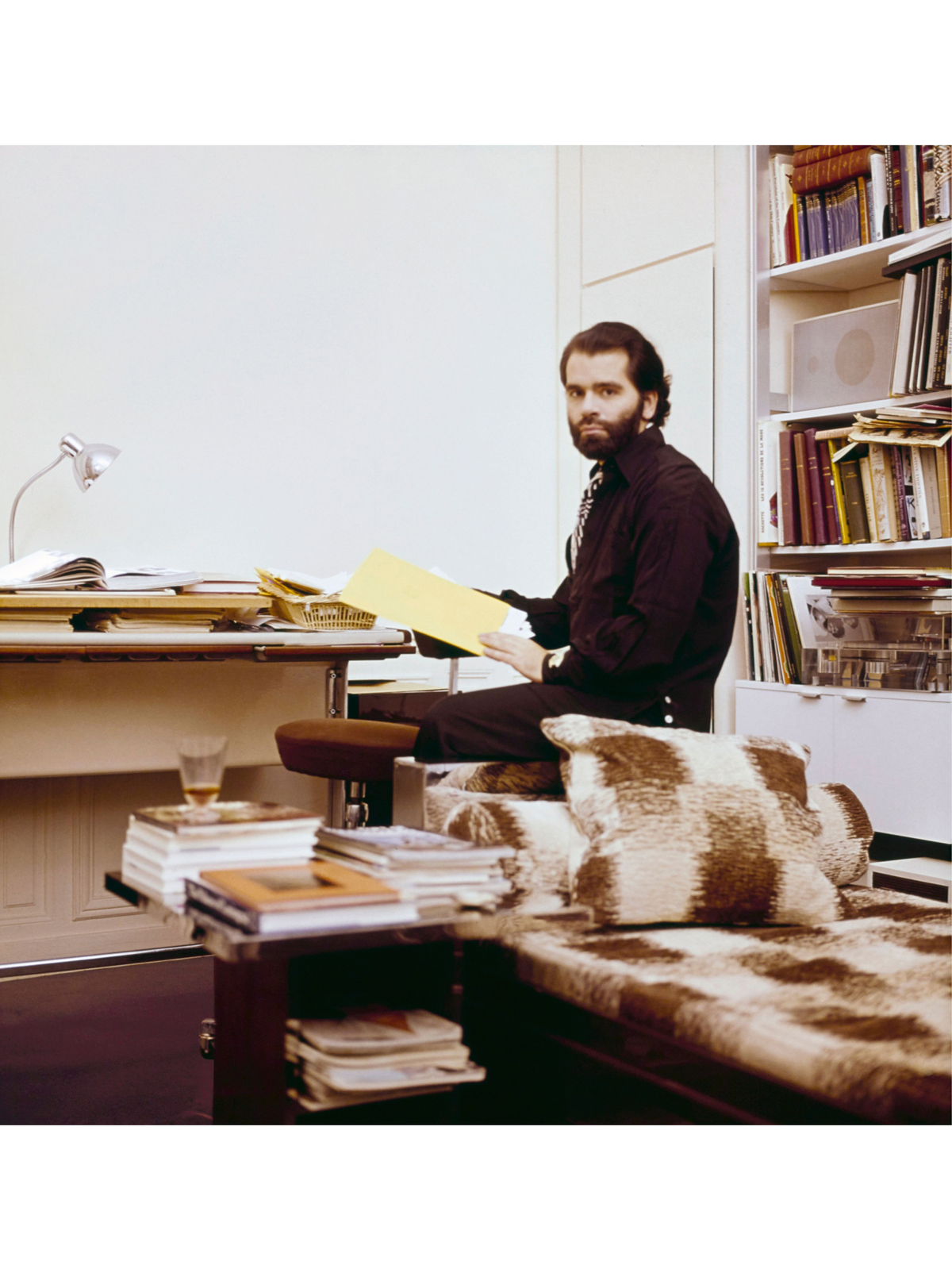When picturing the late fashion designer Karl Lagerfeld, one might recall the bearded look of his early days, or the three-piece suits he adopted in the 1980s, or perhaps the black sunglasses and white ponytail that became his signature in the new millennium. No stranger to the public eye, Lagerfeld’s changing image is easily traceable. “I don’t want to become attached,” he told Joan Juliet Buck, a former editor of Paris Vogue, “and I detach myself when it is time.” Lagerfeld sustained his need for transformation not just through fashion but with décor. The designer owned more than 10 homes during his life, located everywhere from France and Germany to Italy, Monaco, and the United States.
Each of Lagerfeld’s properties served as a canvas with which to explore a singular obsession. After buying an apartment or house, he would decorate it in one style or period down to the smallest detail, only to eventually sell it all and start again somewhere new. His homes included Parisian apartments on Rue de l’Université, Rue des Saints-Pères, and the Quai Voltaire, a hôtel particulier in Paris named Hôtel Pozzo di Borgo, an apartment in Monte Carlo, two in Rome, and houses in Biarritz and on Lake Champlain—to name a few. “Each of Karl’s apartments is a perfect and closed universe, but a sincere one,” said the French designer Andrée Putman, a friend who collaborated with Lagerfeld on several projects.
“When it comes to style, I am not monogamous,” said Lagerfeld. His tastes ranged from historic to modern to contemporary. While the designer returned to 18th-century opulence—originating from his fascination with a painting by Adolph von Menzel, Voltaire in the Court of Frederick II of Prussia, which he discovered in an antique shop during his childhood in Hamburg, Germany—he was also drawn to the 1920s and 1930s, to artists such as Georges Lepape and Jean-Michel Frank. Lagerfeld’s aesthetic range offers a rich timeline that includes the revival of Art Deco in the 1960s and the rise of the Memphis Group in the 1980s.
“Karl Lagerfeld was acutely aware of the importance of the past but sought to simply keep it in front of him as a constant presence,” says Patrick Mauriès, a co-author of Karl Lagerfeld: A Life in Houses. The book, written with Marie Kalt, aims to understand the designer through the photographs and histories of 13 homes, each marking a phase of Lagerfeld’s life. —Jeanne Malle

Karl Lagerfeld: A Life in Houses, by Patrick Mauriès and Marie Kalt, will be published January 23 by Thames & Hudson
Jeanne Malle is an Associate Editor at Air Mail












